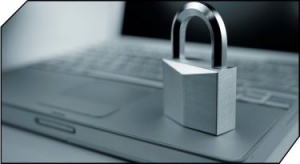Insider Threats
From Computing and Software Wiki
An insider threat is anyone who has "special access or knowledge with the intent to cause harm or danger" [8]. Any disgruntled employee, contractor, or formal employee can be considered as an insider threat as most organizations have little to no protection to prevent sensitive material from being exposed. The consequences of failing to protect an organization's sensitive material can be devasting such as the security breach of 4 major U.S. banks in March, 2005.

Of about 100 corporate breaches or losses of information that were made public in 2005, about half were from the inside—and about half of those were straight-on thefts of information by employees [5].
Contents |
Sources
Employees
Employees of an organization are amongst the greatest risk in terms of access to and potential harm with an organization’s sensitive material. Organizations typically assume that they can trust their employees. They believe that their employees are primarily interested in the productivity and successfulness of the organization. Therefore they are not considered to be of any possible danger and are considered last when a leak of sensitive material has occurred. [2]
Contractors
Contractors pose a greater risk to an organization as often in practice, they are not subjected to the same background verifications and screening as a regular employee. Organizations also have little to no influence and control on the hiring procedures utilized by contractors. This puts an organization in risk as contractors often have high, privileged access to the organization's sensitive materials due to the outsourcing of IT functions. [2]
Former Employees
Former employees who pose a threat to their former organization are typically disgruntled employees. They believe that the organization has “done them wrong” and feel that revenge is justified. [2] They are able to gain access to sensitive material either:
- Directly: Through a back door. If an employee fears termination, he or she may prepare a backdoor access or alternative usernames and passwords in order to gain entry. They may also begin collecting proprietary data for later use.
- Indirectly: Through former associates. A former associate may create a back door access for the former employee or may provide him or her with proprietary information.
Prevention & Counter Measures
There are several prevention and counter measures in minimzing the risk of insider threats. A combination of training, account protection, and the knowledge of one knowing that their actions are being logged and audited can hesitate a disgruntled employee from attacking the system or revealing sensitive materials. "Insiders tend to feel more confident and less inhibited when they have little fear of scrutiny by coworkers; therefore, remote-access policies and procedures must be designed and implemented very carefully." [1]
Background Checks
Several organizations do not perform adequate background verification on their new employees. Screening new employees properly, such as reference checks or inspecting criminal records, can reduce the probability of an organization hiring individuals that may be an insider threat. Background checks should be performed for all individuals who are given access to an organization's sensitive materials even if they are not directly employed by the organizations (e.g.: Contractors) [4].
Monitoring Employee Behaviour
U.S. Secret Service studies have shown that most insider attacks were done by individuals who had disciplinary problems. [4] Procedures can be created and enforced for both the human resources and IT departments to monitor employee behaviours. Some examples include but are not limited to:
- Through the use of access and account policies, an organization can associate online actions with the employee that performed them. Online actions should be logged and periodically monitored for suspicious behaviour. The logs can also be audited by the organization to discover and then further investigated for possible insider attacks. [1]
- Monitoring suspicious or disruptive behaviour by employees within the work place. An organization can institute policies that require their employees to report any suspicious behaviour which should be followed up by the human resource department. [1]
Restrictions on Remote Access
Majority of insider attacks use some form of remote access. [4] An organization should restrict remote access to only those individuals with a legitimate, business related need.
Employees accessing the organization from outside should not be granted the same level of privlege as they would have in the work place. The restricted remote access not only protects the organization against insider attacks but also viruses and malware that can spread through the connection.
Enforcing the Principle of Least Privlege
The Principle of Least Privilege refers to the concept that all users in a system are granted the "most restrictive set of privileges (or lowest clearance) needed for the performance of authorized tasks." [3]. This principle minimizes the potential damage caused by an accident, error, or unauthorized use.
It is also important for an organization to have a procedure within their policy that requires the terminated employee's access accounts be disabled from all of the organization's access points including: physical locations, networks, software, data, and all sensitive materials. [4]
Monitoring Electronic Outbound with Software
Organizations can utilizie software to monitor electronic outbounds for sensitive materials. Some examples of electronic outbounds include but are not limited to:
- Instant messaging
- Copying to a portable USB drive
By monitoring the outbound channels, software solutions can use various algorithms and pattern matching against a database of stored sensitive material to see if anything is being leaked out. A suspicious match is generally flagged and followed by by the appropriate party [5]. Some software solutions, such as Vontu, are sophisticated to a point that it can even spot material such as source code or financial information [6].
Example of an Insider Threat

Customers' account information from several banks were illegally sold by bank employees to Orazio Lembo, whom police said was illegally posing as a collection agency [7].
The consequences of ignoring insider threats can be devastating. A notable example would be in March, 2005 where personal and account information for approximately 670,000 individuals in New Jersey were stolen by employees from the Bank of America, Wachovia, Commerce Bancorp, and PNC [5]. It was considered one of the biggest data thefts ever in the banking industry. The employees were "upper-level" bank employees who had access to organizations' customers' accounts and were paid $10 per account. They were paid by Orazio Lembo, a man who posed illegally as a collection agency, who then sold the information, which included customer account numbers and balances, to over 40 law firms and collection agencies [7].
See Also
External Links
References
- 1: "Protecting Against Insider Threat", Dawn Cappelli, Andrew Moore, and Timothy Shimeall, http://www.sei.cmu.edu/news-at-sei/columns/security_matters/2007/02/security-matters-2007-02.htm
- 2: "The Insider Threat To Information systems", Eric D. Shaw, http://www.ntc.doe.gov/cita/CI_Awareness_Guide/Treason/Infosys.htm
- 3: "Applying the Principle of Least Privlege to User Accounts on Windows XP", Mike Danseglio, http://technet.microsoft.com/en-us/library/bb456992.aspx
- 4: "Thwarting insider threats", Mike Chapple, http://searchsecurity.techtarget.com/tip/1,289483,sid14_gci1093643,00.html
- 5: "The Insider Threat", Steve Hamm, http://www.businessweek.com/the_thread/techbeat/archives/2006/01/the_insider_thr.html
- 6: "Protect source code, protect intellectual property", Vontu, http://www.vontu.com/solutions/high-tech.asp
- 7: "Bank security breach may be biggest yet", CNN, http://money.cnn.com/2005/05/23/news/fortune500/bank_info/
- 8: "Insider Threat: Protecting The Enterprise from Sabotage, Spying, and Theft", Dr. Eric Cole, Sandra Ring, pg 7.
--Balijam 00:34, 25 March 2008 (EDT)
